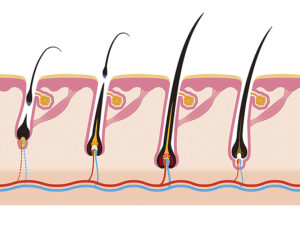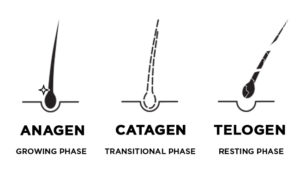 We might not think so, but a hair we lost, for example (after washing our hair), could spend up to six years on the top of our head, growing at a rate of 1 to 1.5 cm from month to month. We cut it, painted it, molded it – yet, because we were really careful about it, it could have reached such a beautiful age. What changes have been made to our hair over the years and will it remain viable for a long time when it is re-transplanted on the scalp?
We might not think so, but a hair we lost, for example (after washing our hair), could spend up to six years on the top of our head, growing at a rate of 1 to 1.5 cm from month to month. We cut it, painted it, molded it – yet, because we were really careful about it, it could have reached such a beautiful age. What changes have been made to our hair over the years and will it remain viable for a long time when it is re-transplanted on the scalp?
In humans, hair loss does not follow a certain periodicity (although changes in temperature and sunny hours in the spring and autumn cause hair loss in many people). As a result, our hairs are of different ages. The average life of a hair bulb is 2-6 years, and the loss of 100 hairs per day is still normal. The hair follicles of the scalp have approx. 100,000 active bulbs, a number already defined at birth. They are linked to eachother by tiny blood vessels, so the blood supply and other substances (trace elements, hormones) carried by the blood greatly affect the condition of our hair.
The hair undergoes three physiological phases
- active, growth phase,
- transitional phase,
- resting phase.
The first of these is the longest phase, lasting on average 2-6 years. Then a continuously dividing cell produces more and more cells that become scaled – which will become the hairshaft itself. In the second phase, cell division is eliminated and the hair gradually moves towards the upper layers of the skin in the hair follicle. In the third phase, it eventually disappears, but in the deep layer the dividing cell returns in order and creates cells of a new specimen. One bulb can repeat this three step cycle 10-20 times appoximately.
 Unfortunately, the cycle outlined above is not always as perfect
Unfortunately, the cycle outlined above is not always as perfect
Over 6 weeks of malnutrition (strict diet), prolonged inflammation / fever period, pregnancy, hormonal imbalance, in other words, due to the damage to the hair follicles, the hair follicles do not have enough time to raise the level of the anagen (growth) phase, to grow the hair. Fortunately, this condition reverses itself with the disappearance of the damaging factor.
– It is also possible that as a result of a sudden medicinal effect on the hairs, the hair follicle in the growing phase “releases” the hair, resulting a sudden loss of hair. The process is also temporary.
– 90% of the chronic hair loss affecting hair follicles is due to the so called, androgenic hair loss: due to the effect of male hormones over time, the hairs will not be able to grow above the level of the scalp, resulting long-term (chronic) gradual hair loss.
It is good news, however, that if a person chooses to have a hair transplant for aesthetic reasons in our hair transplantation clinic at Budapest, the vitality of the transplanted follicular units, or hair follicles, remains the same. You can learn more about the prices, process and results by contacting our medical staff and you can also check the before and after page.
Source: Hair-Hungary
We hope you enjoyed our article and aroused your interest. More articles coming soon! For details, for further information on prices, to request an appointment or to request a treatment plan/quote, please get in touch with our clinic in Hungary by e-mail or by phone. Naturally we reply in English!
Hair Transplantation Clinic – Specialist in Hair Implants & Graft
Email: hair@laportabp.net
Tel: +36 30 299 0769 (HU)
Tel: +44 7448 155215 (GB)
Tel: +353 85 777 58 57 (IE)
